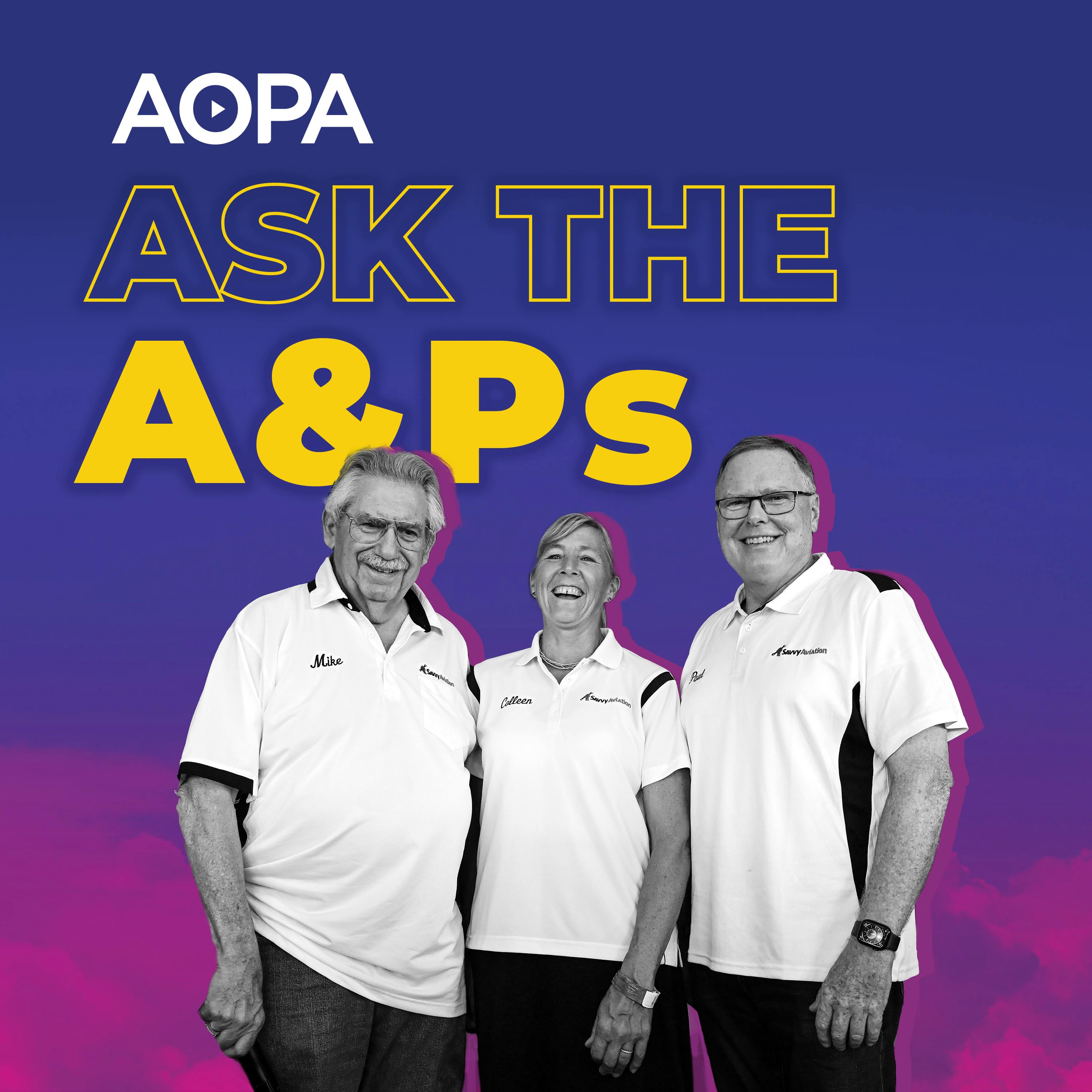Use the TLAR system. That looks about right
Description
From the seemingly benign--what tire ply to use--to the extreme--hitting 500 degrees on a cylinder--Mike, Paul, and Colleen face it all this month. And we mean all, like Ron's 172 that produces a loud bang exactly two minutes after shutting down. Submit your questions to [email protected]
Full notes below:
Larry has a turbonormalized Beechcraft Bonanza. When it came time to replace his tires he decided to go to with 8 ply, but he later researched and found the type certificate specified 6 ply. The Goodyear spec sheet seemed to indicate he would be over the weight limit on 6 ply. Paul said the older lighter Cessna 210s were 6 ply, but were upped to 8 ply later on. He suggests it’s ok to go up in ply if the dimensions are the same. Colleen also admitted she went from 4 to 6 ply on her Cardinal at the last tire change. Mike says if Larry is in violation by using a higher play, then he is as well. He mentioned a recent tire supply problem that prompted him to go up in ply.
Randy bought an engine without logbooks that was intended for a Cirrus SR20 in Guatemala City. He’s wondering if he can put it in a Cessna 175 or Skymaster. Colleen brings up the lack of AD compliance data. Some ADs are for internal engine parts that can only be verified with paperwork or by opening up the engine. Ultimately Paul said it’s up to the mechanic who has to hang the engine and whether he or she is comfortable with its AD compliance status. Mike said from a safety standpoint he would want to pull the lifters and look at the camshaft. And he would pre-lubricate everything, including the cam while the lifters are out. If it’s not making metal within 100 hours, you’ve dodged a bullet.
Tom is wondering how to tell if his engine with a constant speed propeller is producing full power. At sea level he has 29 inches of manifold pressure with an ambient pressure of around 30 inches. All the hosts agree that this sounds about right, given that you’ll lose some pressure through the intake and other areas.
Jeff has a Cessna Cardinal with a recently installed electronic engine monitor. He saw on climb-out near El Paso that the cylinder head temperature on the third cylinder topped out around 500 degrees. Now he’s wondering what to do. Compressions are excellent and the oil analysis is good. He also fixed the baffles, which fixed the problem. Mike suggests borescoping the piston. Failure points would be corner melting or the pockmarked appearance of detonation. If the piston looks ok, you’re probably fine, he says.
Ron has a 172 that has an unusual problem. Every time the fuel level is below half, and two minutes after engine shut-down, there’s a loud bang. It sounds like someone hit the top of the wing with a bat, he said. Paul thinks it’s possible the tank is being overpressurized, and the reason it takes two minutes is because the weep hole is so small that it takes that long for the tank to equalize. He suggests quickly depressurizing after landing by taking off a fuel cap and seeing if air rushes by. If the tank vent tube is in the wrong position it can cause the overpressurization.
Robert has a Cherokee 140 that is burning about a quart of oil per hour. Mike said oil consumption is always a cylinder problem, but not always a problem with all cylinders. Borescoping the cylinders may help identify oil pooled in one particular cylinder. Oil consumption comes from three sources--crankcase compression, which will show as oil out the breather tube. Burning oil will show as soot on the airplane. Or there could be a leak. Paul suggests a ring wash to further identify the problem cylinder, and potentially solve the issue. A detailed explanation is available at bit.ly/solventflush
More Episodes
Published 11/15/24
Lean of peak is causing odd vibrations in a Commander, and the hosts discuss proper troubleshooting. Plus carb heat on the ground, dehydrators, and parts no longer manufactured. Email [email protected] for a chance to get on the show.
Full notes below.
Chip said his mechanic is concerned about...
Published 11/01/24
Rough idle, electronic ignition basics, airplanes to avoid (or not), and the difference between detonation and pre-ignition are on tap for this episode. Email us at [email protected] for a chance to get on the show.
Join the world's largest aviation community at aopa.org/join
Full notes...
Published 10/15/24


